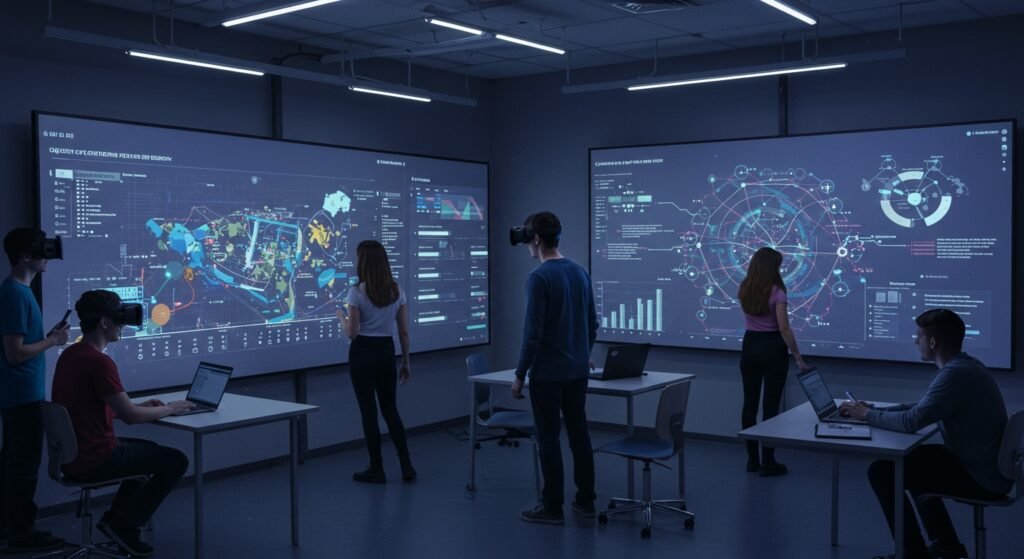The Role of Simulation in Operations Research Education
Operations Research (OR) is a discipline focused on applying advanced analytical methods to help make better decisions. Traditionally, teaching OR has relied heavily on theoretical concepts and mathematical models. However, in an increasingly complex world, the practical application of these theories is paramount. This is where simulation plays a pivotal role, transforming how operations research is taught and understood in academic settings. It bridges the gap between abstract models and real-world scenarios, preparing students with invaluable practical experience.
Table of Contents
- The Evolution of Operations Research Education
- Why Simulation is Crucial in Modern Learning
- Key Simulation Tools and Methodologies
- Challenges and Future Trends
- Conclusion
The Evolution of Operations Research Education
For decades, Operations Research curricula focused on foundational mathematical programming, queuing theory, inventory models, and network optimization. While these core principles remain vital, the complexity and scale of modern business and industrial problems have outgrown purely analytical solutions. Educators have increasingly recognized the need to move beyond chalkboard equations to provide students with tools that can handle uncertainty, dynamic behavior, and large datasets. This shift necessitates experiential learning, which is precisely where techniques like simulation excel, allowing for the experimentation and analysis of systems that are too complex, risky, or expensive to test in reality.
Why Simulation is Crucial in Modern Learning
Bridging Theory and Practice through Simulation
One of the greatest challenges in academic learning is connecting theoretical knowledge to practical application. Simulation provides a safe, virtual environment where students can apply OR models to realistic problems without real-world consequences. Whether it’s optimizing a supply chain, managing hospital patient flow, or designing a manufacturing line, a simulation allows students to see the direct impact of their decisions. This hands-on experience reinforces theoretical concepts, making them more tangible and understandable, and fostering a deeper, more intuitive grasp of complex systems.
Enhancing Decision-Making Skills
Operations Research is fundamentally about making better decisions. Simulation tools enable students to test various strategies, analyze different scenarios, and understand the trade-offs involved. They can observe how changes in input parameters affect system performance, identify bottlenecks, and validate hypotheses. This iterative process of modeling, simulating, and analyzing refines their critical thinking and problem-solving abilities, preparing them to make robust decisions in ambiguous, real-world situations.
Key Simulation Tools and Methodologies
Several software packages and methodologies are widely used in OR education to facilitate simulation. These tools range from discrete-event simulation, which models the progression of entities through a system over time, to agent-based modeling, which simulates the interactions of autonomous agents. The choice of tool often depends on the complexity and nature of the system being modeled.
| Simulation Tool/Methodology | Primary Application | Key Benefit in Education |
|---|---|---|
| Arena | Manufacturing, Healthcare, Logistics | Visual modeling, robust analysis features |
| Simul8 | Process optimization, Service systems | Ease of use, quick model development |
| AnyLogic | Multimethod simulation (Discrete, Agent, System Dynamics) | Flexibility, large-scale system modeling |
| Monte Carlo Simulation | Risk analysis, financial modeling | Understanding uncertainty and probability |
These tools not only provide a platform for conducting simulations but also offer features for data collection, statistical analysis, and visualization, making the learning process comprehensive.
Challenges and Future Trends
Overcoming Implementation Hurdles
Despite its benefits, integrating simulation effectively into OR education comes with challenges. These include the steep learning curve associated with complex software, the need for significant computational resources, and the time required to develop realistic models. Educators must balance teaching fundamental OR concepts with practical simulation skills, often requiring specialized training and up-to-date hardware and software infrastructure. Ensuring access to these resources for all students is crucial for equitable learning.
The Future of Simulation in Academia
The future of simulation in operations research education looks promising. Advances in cloud computing, artificial intelligence, and virtual reality are making simulation tools more accessible, powerful, and intuitive. We can expect more immersive learning experiences, where students interact with simulations in VR environments, collaborate on complex models, and leverage AI to analyze simulation outputs. This evolution will further solidify simulation’s role as an indispensable component of modern OR curricula. For more insights into related advancements, explore our article on The Future of Operations Research.
Conclusion
The strategic incorporation of simulation into operations research education is no longer optional but essential. It empowers students to move beyond theoretical understanding, fostering practical skills, enhancing decision-making capabilities, and preparing them for the intricate challenges of the professional world. As technology continues to evolve, the methodologies and tools for simulation will only become more sophisticated, offering even richer learning opportunities. Embracing this dynamic approach ensures that future generations of OR practitioners are well-equipped to drive innovation and solve the complex problems of tomorrow. For further reading on this topic, consider resources from institutions like INFORMS, a leading society for operations research and analytics professionals.


